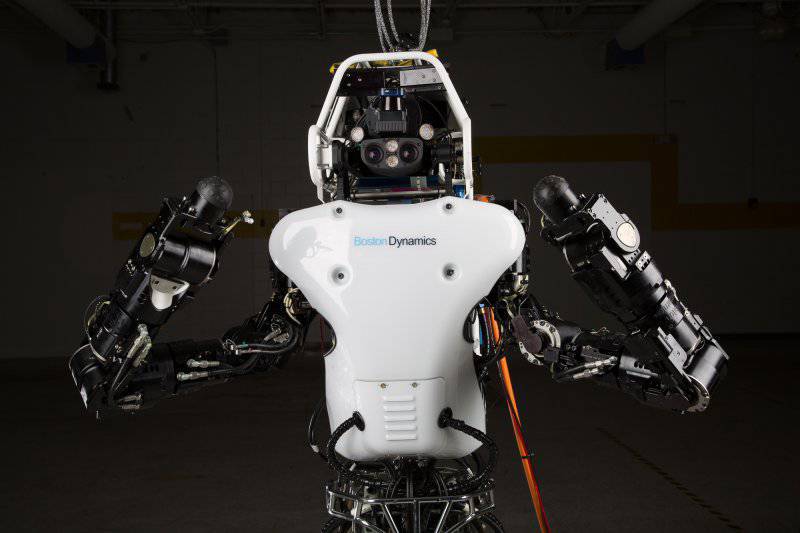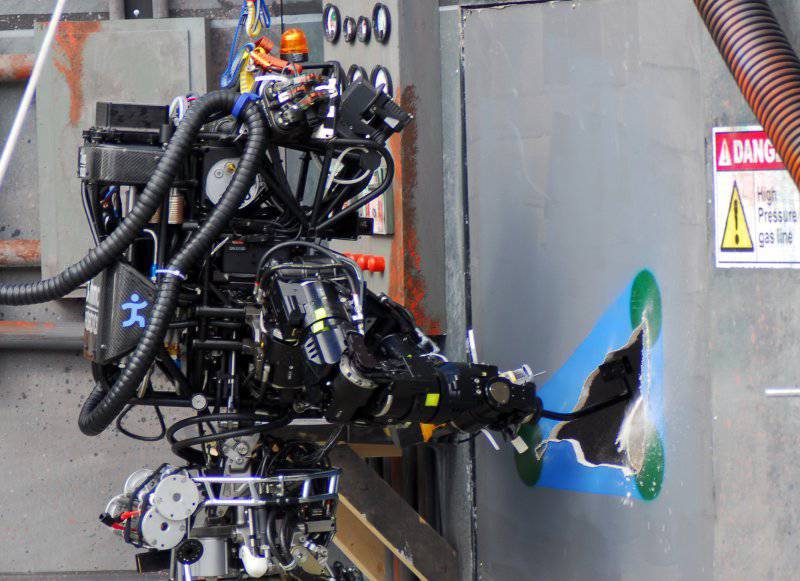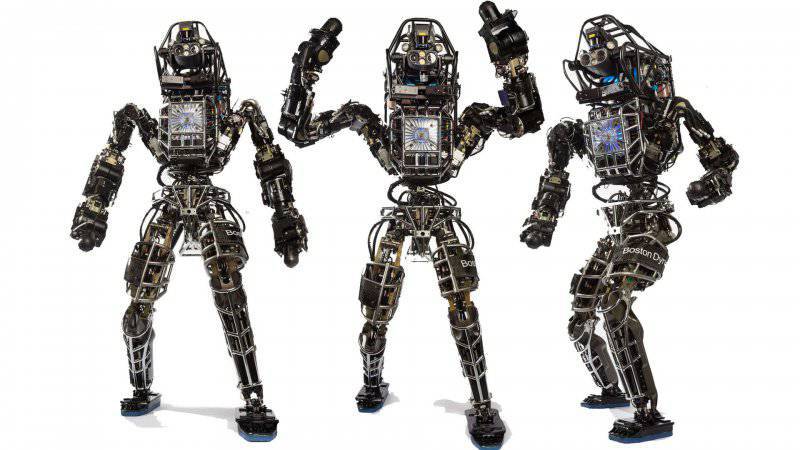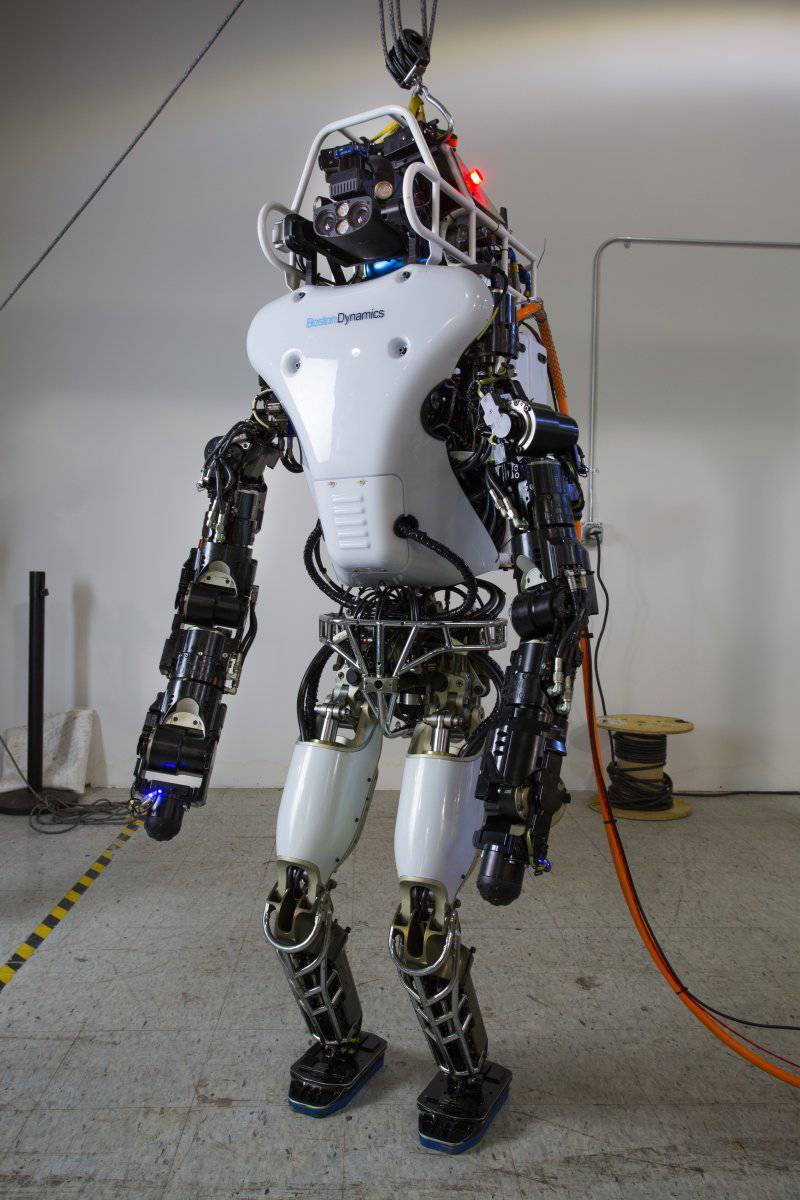American promising robot Atlas has become wireless
DARPA Robotics Challenge Program
A new DRC program called the DARPA Robotics Challenge was announced by Pentagon at the start of 2013. According to representatives of the military, the finalist of the competition should completely replace people in the aftermath of emergency situations that are similar to the one that occurred in Japan at the Fukushima-1 nuclear power plant after a powerful tsunami, as well as the oil leakage that occurred on the Deepwater Horizon well in the Gulf of Mexico or when mine collapses in Chile. The robot must move freely on an uneven surface, which is littered with numerous debris, use a conventional and electric tool, be sufficiently independent in order to control its work could not even the most skilled worker, and even independently manage the vehicle.
Initially, participants in the competition decided to divide into 4 groups, 3 of which received funding directly from the Pentagon. The first (Track A) was to create a robot and related software for it, the second (Track B) - was engaged in the development of software only, the third (Track C) - was engaged in the development of only a physical shell. Separately from them, the fourth group worked Track D, which created both a robot and software for it, but for its own money.
At the same time, the DRC competition itself was divided into 3 conditional stages. Following the first of these, the Virtual Disaster Challenge, which took place in June 2013, managed to form teams of participants from groups B and C. They needed to combine their skills to create robots that would be able to compete with androids developed by participants from groups A and D.
The second stage of the competition was held in December 2013. It was attended by 16 teams, of which until the final stage only 8 competitors were allowed, who were able to score the most points. These companies are (in descending order of results) Japanese company SCHAFT, Florida Institute of Human and Computer Perception IHMC Robotics, Carnegie Mellon University and Tartan Rescue National Engineering Center for Robotics, MIT Massachusetts Institute of Technology, NASA RoboSimian Lab, US-based TRACLabs, UK Polytechnic Institute of Worcester WRECS and the Laboratory of Advanced Technologies of the American company Lockheed Martin.
In the future, the Japanese company decided to refuse to participate in the final of the competition. Meanwhile, DARPA was able to determine the dates for the final stage of the DRC program - 5-6 of June 2015. A list of finalists from the 11 companies was also published, to which, besides those already mentioned, the Laboratory of Engineering Sciences, Robotics and Mechanisms of the Virginia College of Technology - Valor, University of California - THOR, American TORC Robotics - ViGIR and South Korean University together with the American Rainbow company were added. - KAIST. At the same time, THOR and Valor in the second stage of the competition acted as a single team, but in the final decided to act separately from each other.
At the same time, DARPA workers presented updated requirements for humanoid robots who will be fighting for first place in this competition. The prize fund in the DRC contest is 2 million dollars. According to the new conditions, developers of robots are prohibited from physically assisting their devices if they get stuck or fall during the tests. The robot will need to return to the working position independently, while the test task will be given one hour, and not 4 hours, as was the case during the second test phase.
In this case, the most important difference from the second stage of the DRC competition was the complete autonomy of the robots. They must be wireless, as in actual conditions of operation the wires severely limit the range of the robots and their effectiveness when working in the emergency area. In addition, all robots should easily transfer long - up to one minute - interruptions in communication, and their management should be organized over a secure data network.
Atlas robot
Atlas is a humanoid robot built on the basis of Google’s Android operating system. He was previously considered one of the most advanced robots on the planet, but now he has become even better. The robot received new, more dexterous wrists, which allow it to quietly turn the door knob without having to move the whole arm. In general, its design has been redesigned by about 75%. And his most important innovation was the autonomy of work, the robot received a battery, which “freed” him from the need for an electrical outlet. This circumstance allowed the Atlas robot to enter the final round of the robotics competition, which is organized by the research and development department of the US Armed Forces. Robots that do not have batteries are simply not allowed to the final part of the competition.
It is worth noting that the company Boston Dynamics gained wide popularity earlier, thanks to such robots as AlphaDog and Petman. Both of these projects were also implemented for the agency DARPA. But unlike AlphaDog and Petman, which were originally designed for military missions, the Atlas humanoid robot is being developed for civilian services. Atlas became the basis for participants in the DRC competition.
Six out of eleven companies participating in the competition created their own robots based on Atlas. We are talking about Helios robots from MIT, Atlas-Ian from IHMC Robotics, Werner from WPI-CMU (previously the team was called WRECS), Hercules from TRACLabs, Florian from ViGIR and Atlas from the Trooper team. At the same time, a press release from 20 in January, 2015, in a press release from the Defense Research Agency, spoke about the 7 teams that work directly with the android from Boston Dynamics. Until the end of January, all these teams will be able to get an updated version of the humanoid robot, which received the designation Atlas Unplugged (i.e., wireless).
The upgraded Atlas robot began to look much more elegant. He also received advanced subsystems. For example, a more efficient and compact hydraulic drive that allows the robot to move faster around the terrain. The outwardly built android will be easier to cope with a number of tasks of the intended competition, for example, to squeeze into rather narrow spaces into which a person could penetrate. This is of great importance, since the android was specially designed for conducting work in such an area and in such conditions in which people find it unsafe.
The new version of the Atlas robot was modified so seriously that only the legs and feet remained from the previous model. At the same time, there is no reason to doubt that one of the most advanced robots on the planet will continue to improve. According to DRC project manager Gill Pratt, only the “legs” have not suffered significant changes in the android — and those just below the knee. It is reported that the updated version of the robot is made of lighter materials that were used to alleviate the overall design and create a more mobile and plastic equipment. The robot has become easier to move, and its movements more and more resemble human ones. By simplifying the design, it was possible to supply it with a more powerful hydraulic drive with variable performance and, most importantly, a lithium-ion battery with a capacity of 3,7 kWh. (modern gadgets nervously smoking on the sidelines).
Such capacity is enough for an hour of intensive work on average, and the new hydraulic equipment allows the robot to function both in battery saving mode and in the maximum power mode that may be needed to perform heavy work, for example, debris disassembly. In addition, the new hydraulic drive is much quieter than the previous one. Now, if you are in the immediate vicinity of a working robot, you no longer need to wear noise-proof headphones. Also, a module was built into the hull of a humanoid robot that allows you to create a network and maintain communication with the operator.
In addition to the differences already listed, the new version of the robot has the following set of innovations:
- a wireless router was installed in the head of the robot, which is able to provide radio communication using commands;
- the shoulders and arms of the robot were altered in such a way that the robot can freely observe the hand at the moment of movement;
- the position of the engines located in the knees, hips and back was changed in order to make the design of the robot even stronger.
At the same time, during all the changes, the dimensions of the android Atlas remained almost unchanged. Its height is 188 cm, and weight - 156,5 kg. It is reported that the robot received three new computers at once, which are responsible for its perception of the outside world, as well as updated more powerful manipulators with a greater degree of freedom than the previous ones. The robot can now open the door with one hand only, without using the whole hand.
Information sources:
http://lenta.ru/articles/2015/01/22/newatlas/
http://hi-news.ru/robots/chelovekopodobnyj-robot-atlas-darpa-pokazala-budushhee-robototexniki.html
http://scientificrussia.ru/articles/google-predstavil-obnovlennoho-robota-atlas-v-pentagone
http://gearmix.ru/archives/17714




Information